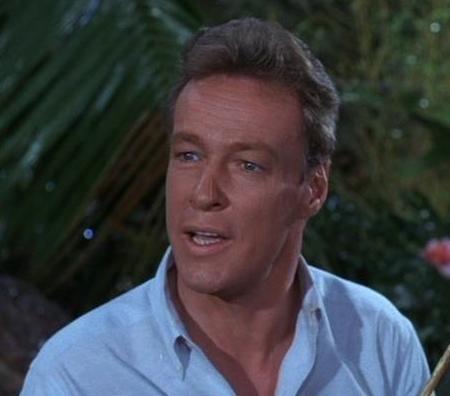Marc Abrahams's Blog, page 431
January 20, 2014
Leadership courses – “Why horses?”
There are a fair number [1][2][3][4][5][6][7] of opportunities for those who’d like to explore the possibilities of enhancing their leadership skills with the help of horses. But, those who follow the world of equine-assisted team and leadership development paradigms might have asked themselves, at some stage, the simple yet all-important question : ‘Why horses?’
If so, they can find answers in a paper by Professor Janet W. Hagen, Ph.D., MBA (at the Department of Human Services and Professional Leadership at the University of Wisconsin Oshkosh, US) entitled: ‘An Equine-Assisted Model for Developing Effective Leadership’ (published in the John Ben Shepperd Journal of Practical Leadership, Spring, 2007) Here’s a partial extract:
“Horses are prey animals.
[...]
Their vision is sharp and their hearing is acute.
[...]
Their ears can swivel around to listen in all directions. Their ears also can move independently from each other which gives the horse the ability to attend to several stimuli at once. Horses have a large gut and long spinal cord which acts as part of their nervous system and which provides them with the ability to sense those things that may be unseen and unheard. As part of the herd, a horse is constantly giving out information about what they feel: anger, fear, fatigue, relaxation or submission. Unlike people, ‘horses don’t lie – they always tell the truth with their bodies. There is no separation between what a horse thinks and what its body says’ “
Here are some videos demonstrating horse ear swiveling dynamics.
Also don’t miss: Introducing a new concept – ‘Equitelligence’
Note: The illustration shows camels not horses. They may also be appropriate for executive leadership and team-building applications. Here are some articles that make progress towards answering the question ‘Why camels?’ [1] [2] [3] [4] [5]

January 18, 2014
Using mathematics to describe things no one knows how to describe well
Here are two cases where: (A) people used mathematical equations to describe complicated things that nobody understands very well; and then (B) other people noticed the, uh, discrepancy.
 The British amateur who debunked the mathematics of happiness: “It seemed incredible to Brown, as though it had been made up. But the number was no invention. Instead it was the product of research that had been published, after peer review, in no less authoritative a journal than American Psychologist – the pre-eminent publication in the world of psychology that is delivered to every member of the American Psychological Association. Co-authored by Barbara Fredrickson and Marcial Losada [pictured here] and entitled Positive Affect and the Complex Dynamics of Human Flourishing, the paper was subsequently cited more than 350 times in other academic journals. And aside from one partially critical paper, no one had seriously questioned its validity….” [Thanks to Jennifer Ouellette for bringing this to our attention. Also see Retraction Watch's look at this.]
The British amateur who debunked the mathematics of happiness: “It seemed incredible to Brown, as though it had been made up. But the number was no invention. Instead it was the product of research that had been published, after peer review, in no less authoritative a journal than American Psychologist – the pre-eminent publication in the world of psychology that is delivered to every member of the American Psychological Association. Co-authored by Barbara Fredrickson and Marcial Losada [pictured here] and entitled Positive Affect and the Complex Dynamics of Human Flourishing, the paper was subsequently cited more than 350 times in other academic journals. And aside from one partially critical paper, no one had seriously questioned its validity….” [Thanks to Jennifer Ouellette for bringing this to our attention. Also see Retraction Watch's look at this.]
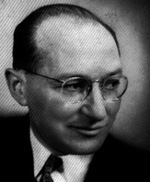 Improbable research: brainstorming calculations: ”Human thoughts and emotions are so complicated and hard to define that almost no sane person tries to describe them with mathematics. One attempt, done seriously, came to be regarded almost as a joke. Another, done as a joke, drew all-too-serious admiration. In 1936, Kurt Lewin [pictured here], a German psychologist in the US, produced a book full of it’s-kinda-sorta-like-this descriptions. He titled it Principles of Topological Psychology. There is nothing kinda-sorta-like-this about topology. Imprecise definitions would be worthless to a topologist. Lewin’s book contains little maths, but lots of inscrutable passages….”
Improbable research: brainstorming calculations: ”Human thoughts and emotions are so complicated and hard to define that almost no sane person tries to describe them with mathematics. One attempt, done seriously, came to be regarded almost as a joke. Another, done as a joke, drew all-too-serious admiration. In 1936, Kurt Lewin [pictured here], a German psychologist in the US, produced a book full of it’s-kinda-sorta-like-this descriptions. He titled it Principles of Topological Psychology. There is nothing kinda-sorta-like-this about topology. Imprecise definitions would be worthless to a topologist. Lewin’s book contains little maths, but lots of inscrutable passages….”

January 17, 2014
Who’s behind the Taxonomy of Barney
The Alcade wrote a short article, quite a while back, about the authors of the landmark study “The Taxonomy of Barney“. This image is from the original study:
BONUS: Widipedia’s partial history of Barney the Dinosaur, which ignores the evidence presented by the “Taxonomy of Barney” authors as to whether Barney really is a dinosaur.
BONUS: “New info in Dinosaur Taxonomy” (1995)
BONUS: “New Barney-Like Organism Discovered” (2009)

The taste of electric currents (part 2 of 2)
Improbable recently profiled the work of the Miyashita Laboratory at Meiji University, Tokyo, Japan, where research is underway into the possibilities offered by ‘electro-gustation’. The lab has not only invented the electric chopsticks but has also investigated a possible way of encouraging diners to use less salt on their potato chips – with the aid of an electric fork. See this video by Hiromi Nakamura and Homei Miyashita entitled : ‘Enhancing Saltiness with Cathodal Current’

January 16, 2014
Unmemorably attractive finger food
Finger foods need not be memorable to be chosen by people whose memories no longer work well, suggests this study:
“Attractiveness and consumption of finger foods in elderly Alzheimer’s disease patients,” Virginie Pouyet, Agnès Giboreau, Linda Benattar, Gérard Cuvelier, Food Quality and Preference, epub January 3, 2014. The authors, at Centre de Recherche de l’Institut Paul Bocuse, Ecully, France, at ORPEA, Puteaux, and at AgroParisTech, Massy, France, report:
“Finger foods are helpful for patients with Alzheimer’s disease because they enable them to eat alone with their fingers rather than with cutlery, once this has become too difficult to use…. The aim of our study was to investigate the attractiveness factors of finger foods to Alzheimer’s disease patients…. The results showed that the finger foods with a sauce (vs. no sauce) and with two layers (vs. one layer where all ingredients were mixed) were more frequently chosen first and then consumed. By contrast, the shape (moulded vs. squared) of the finger foods had no significant impact on first choice and food consumption. These findings support the view that Alzheimer’s patients are able to make food choices when offered alternatives.”
Further detail, from l’Institut Paul Bocuse.
(Thanks to investigator Neil Martin for bringing this to our attention.)

January mini-AIR: Jerks, in Montana and elsewhere
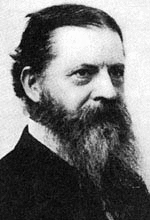 The December issue of mini-AIR (our monthly e-mail newsletter just went out. (mini-AIR is a wee little supplement to the magazine) You can read it online, too. Topics include:
The December issue of mini-AIR (our monthly e-mail newsletter just went out. (mini-AIR is a wee little supplement to the magazine) You can read it online, too. Topics include:
Jerks in Montana history
the Jerks and Monopoles Competition
More jerks in Montana history
More jerks elsewhere
The 100-Improbables Essay Contest
and more
It also has info about upcoming events.
Mel [pictured here] says, “It’s swell.”
mini-AIR is the simplest way to keep informed about Improbable and Ig Nobel news and events.
Want to have mini-AIR e-mailed to you every month? Just add yourself to the mini-AIR list.

Farewell, beloved professor (of Gilligan’s Island)
Sad news: Russell Johnson, the actor who played the role of The Professor on the TV show Gilligan’s Island, has died. In 1993, Mr. Johnson took a star turn at the 3rd First Annual Ig Nobel Prize Ceremony, back when we were still holding the ceremony at MIT. When I introduced him on stage, the audience—many of whom were MIT and Harvard students, faculty and staff— went utterly wild with joy and tears. Afterwards, many audience members told us that when they were growing up The Professor was the *only* scientist character on TV who was portrayed as a nice guy, rather than as a weirdo or evil creature.
In person, before the ceremony, Mr. Johnson told us he was fearful that people in the audience would think badly of him for pretending (in the TV series) that he was a scientist. We all assured him that, to the contrary, people were thrilled at the chance to be in the same room with him. It was a very happy, and moving experience for all of us. You can see Russell Johnson in this photo, seated at right in the front row, wearing glasses and applauding. (The man in the white coat is Harvard professor William Lipscomb, at the moment that an audience member won him as the prize in the first-ever Win-a-Date-With-a-Nobel-Laureate Contest. The man in the Einstein wig is astronomer Alan Lightman, author of the then-recent book Einstein’s Dreams.)
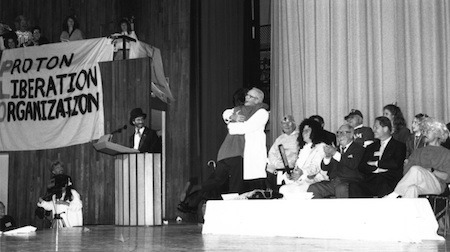
Russell Johnson, the Professor on ‘Gilligan’s Island,’ Dead at 89
Russell Johnson, who played the professor on “Gilligan’s Island,” died Thursday morning, his agent confirmed to TheWrap. He was 89.
Johnson died at his home in Washington state of natural causes, his agent, Michael Eisenstadt said.
Johnson was the last surviving male castaway from the TV series that ran from 1964 to 1967. Bob Denver (Gilligan) died in 2005; Alan Hale (the Skipper) died in 1990; and Jim Backus (Mr. Howell) died in 1989. Natalie Schafer (Mrs. Howell) died in 1991; Dawn Wells and Tina Louise (Mary Ann and Ginger) are the last surviving castmembers….
Here’s a glimpse of The Professor on Gilligan’s Island:
Thanks to Sarah Cole for bringing the sad news to our attention.

Improbable Research Returning to Arisia — Saturday, Jan 18
 Improbable Research returns to New England’s largest science fiction and fantasy convention in January, to air interesting research which is neither fiction nor fantasy!
Improbable Research returns to New England’s largest science fiction and fantasy convention in January, to air interesting research which is neither fiction nor fantasy!
We have challenged Arisia’s attendees in past years by showing them diagrams from real patent applications and asked, “What do you think this is? – What do you think this is meant to do?”. And we have tested their appreciation of actual science by reading excerpts from scientific research (for example) on devising parachutes for toxic-laced rodents, on objects doctors have removed from their patients’ recta, on the best way to blow up a dead horse, on UK ostriches directing mating dances toward humans, on how long you need to be infested with ear mites before you regain some of the hearing they at first caused to diminish…
Each year there are new papers, new readers, new ideas… and some returning ones too. Here are some details for attending our session at Arisia 2014:
What: Arisia 2014
Date: Saturday, January 18
Time: 11am EST
Location: Grand Ballroom DE (Westin Boston Waterfront hotel)
Session Name: Improbable Research and the Ig® Nobel Prize
Misc: We will have a limited number of FREE copies of our Magazine available at this event.
Misc: After the event we will make the papers we read (and some that we didn’t) available
Please note: If you are a member of the LFHCfS and plan to attend Arisia, please introduce yourself to us before we start the session and we will help give you all the public admiration your membership deserves
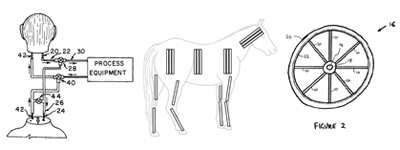
Some of the images we’ve used to challenge Arisia goers

Anne Madden joins Luxuriant Flowing Hair Club for Scientists (LFHCfS)
Anne Madden has joined the Luxuriant Flowing Hair Club for Scientists (LFHCfS). She says:
I am a microbial ecologist who studies the microbial jungles associated with wasps. I study wasps and their nests, because the tangled jungles of my morning hair defy scientific explanation. . . that, and because the IRB committee cares more about my hair than wasps. (This photo was taken by Alonso Nichols/Tufts University.)
Anne A. Madden, LFHCfS
Doctoral candidate
Starks Laboratory
Tufts University
Medford, Massachusetts, USA


Emotional intelligence does but does not predict success in med school
 The conclusion reached in this study seems to rather contradict the study’s headline:
The conclusion reached in this study seems to rather contradict the study’s headline:
“Emotional Intelligence Predicts Success in Medical School,” Nele Libbrecht, Filip Lievens [pictured here], Bernd Carette, Stéphane Côté,” Emotion, epub Nov 11 , 2013. The authors, at Ghent University and the University of Toronto, explain that:
“Emotional intelligence did not predict performance on courses on medical subject domains. The results suggest that medical schools may better predict who will communicate effectively and show interpersonal sensitivity if they include measures of emotional intelligence in their admission systems.”
(Thanks to investigator Neil Martin for bringing this to our attention.)

Marc Abrahams's Blog
- Marc Abrahams's profile
- 14 followers




